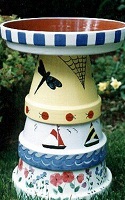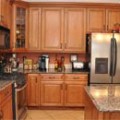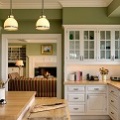Broken household items can bring a home’s value down significantly. Some appliances are fortunate enough to qualify for appliance insurance, whereas walls, ceilings, floors, and other appliances can only be replaced once they’re broken. Fortunately, when done right, upcycling broken household items can actually bring a home’s value higher than if the broken household item wasn’t broken to begin with. This principle comes from Kintsugi or Kintsukuroi, which is the Japanese art of adding lacquer mixed or dusted with powdered gold, silver, or platinum to broken pottery, with the premise that breakage and repair adds beauty to a property. That being said, here are some create ways to upgrade broken household items. These tips and tricks on upcycling broken household items can make your home even more valuable and interesting:
Think Lego
Before throwing away that rusty silverware or broken table, think about what else you may need around the house. Do you need a study table? Do you need a shelf? Once you have a list of what you need, deconstruct them into smaller component parts. For example, a study table would need four legs and something wide enough to be used as a tabletop. A shelf would need perhaps a few pieces of wood and something to securely fasten them to the wall. After knowing what component parts you need, think about the scrap and other pieces of junk lying around the house and find a way to make even the most unexpected combinations of parts work for you. This is really more of a trial-and-error method, but when this does end up resulting in unique furniture, the tediousness becomes well worth-it. The key is to think Lego and make pieces fit together despite their differences in form and function.
Sometimes Items Don’t Break; They Just Evolve
An important skill to develop is seeing the possibilities even in the most seemingly useless items. Forget the original function of whatever broken item (like my recently broken stove) you’re looking at; time has broken it down for you to find new meaning for its existence. Window glass can become boxes that hold a captive sea, or doors can become containers for worlds of information. A good way to look at broken items differently is to judge them based on their textures, shapes, colors, or even smell, instead of looking at them as a whole.
To help spark ideas into your mind, here are a few known upcycling projects people have done and are happy with:
- Using old doors to cover exposed ceilings – assuming that there are no leaks that could accumulate in the exposed ceilings, covering them up with old doors gives your home a rustic, warm feeling.
- Using broken windows as tables – have a broken window with cracked glass? Cover it up with two sheets of glass and find a strong foundation for it to sit on, and you have yourself an elegant postmodern coffee table!
- Using a broken piano as a mini bar – have an irreparable piano lying around the house? Regular pianos tend to have a rather huge trunk, which you can cut a huge rectangle in, add a few lights and glass panels inside. After a few polishing and cleaning up, you now have a funky little bar in your own home!
Creative Ways to Upgrade Broken Household Items – Final Thoughts
This is just the beginning! When a part of your home breaks down, it may lose its original form and function, but it gains a possibility of becoming something more useful and more beautiful. Learn to see your home as something that grows with you. Be observant and see how each and every appliance and structure transforms in terms of its looks and its usage. When you learn to do this, every broken item becomes a possibility more than a responsibility!










Thankfully, the internet and especially Pinterest are such a big help. Thanks for the tips, I didn’t know that you can use an old door to cover exposed ceilings.
Clarisse @ Savvy Scot recently posted…Get Growing Intro
Yeah – Pintrest is a gold mine of good ideas for arts & crafts around the house using old and broken stuff!